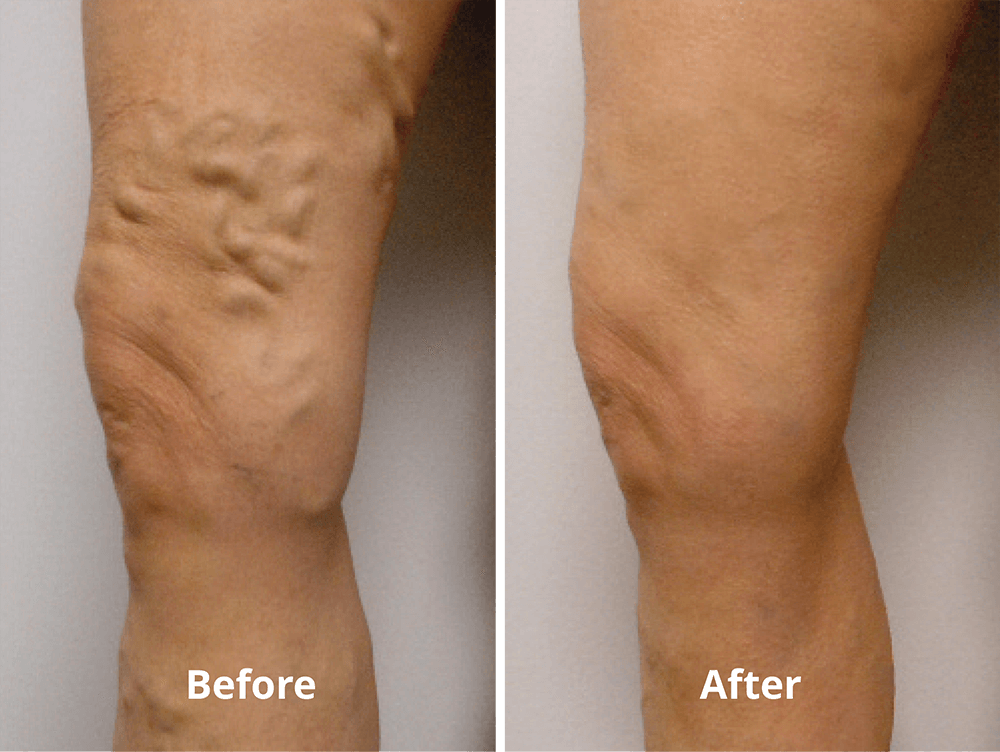Varicose Veins
What Are Varicose Veins?
Varicose Veins are large, ropey, and twisting blue vessels, which appear in the skin anywhere from the thigh to the foot. The actual cause of varicose veins is inefficient, faulty vein valves. These valves don’t close properly, allowing blood to leak back with gravity and pool in the vein. They are most often the result of leaking and incompetent valves in the superficial saphenous veins. These abnormal valves allow blood to flow retrograde back down the legs and into all of the skin veins. The repeated reflux causes high vein pressures, resulting in veins, which enlarge and twist over time. Leg pain associated with varicose veins is usually due to swelling of the veins and of the surrounding tissues. Phlebitis develops when one or more of these veins develop a blood clot, usually when the patient is inactive. A painful and red lump where varicose veins are located is nearly always a sign of phlebitis.

What Are the Symptoms?
Varicose veins are not just a cosmetic disorder. The veins bulge and stretch and result in many unpleasant side effects such as:
- Heavy and tired legs
- Aching and throbbing pain
- Swelling
- Itching
- Leg cramps
- Restless Leg Syndrome
Heredity is a primary factor in over 80% of varicose vein cases. Other contributing factors may include pregnancy, obesity, hormone therapy, standing or sitting for long periods of time and injury.
How Are They Treated?
Quick, effective outpatient visits treat the root cause, not just the symptoms.
Diagnosis & Evaluation
At Indiana Vein & Lymphatic, we treat vein issues using a stepwise approach. We start by identifying the problem with an ultrasound study of the legs. Once the bad veins are identified, we discuss the various treatment options and tell you which ones we think are the best for you.
Treatment
Varicose veins and their underlying cause are quite treatable. We offer patients a variety of varicose vein treatment procedures that seal off veins with unhealthy valves. Blood circulation then returns to the veins with properly working valves, and closed veins are eventually absorbed back into the body. Following treatment, the leg must be supported to allow the vein walls to stick together. This is accomplished by using compression bandages or graduated support stockings. Newer stocking designs have greatly improved the comfort associated with their use.
We pride ourselves on our ability to offer our patients a wide variety of treatment options:
Vein Disease Diagnosis
More
Venous Treatment Phases
More
Conservative Measures
More
Endovenous Laser Ablation
More
Radiofrequency Endovenous Ablation
More
Varithena
More
VenaSeal
More
Ultrasound Guided Sclerotherapy
More
Surface Sclerotherapy
More


“I can now endure intense cardio and leg workouts, and it does feel like I’ve been given a new set of legs.”
